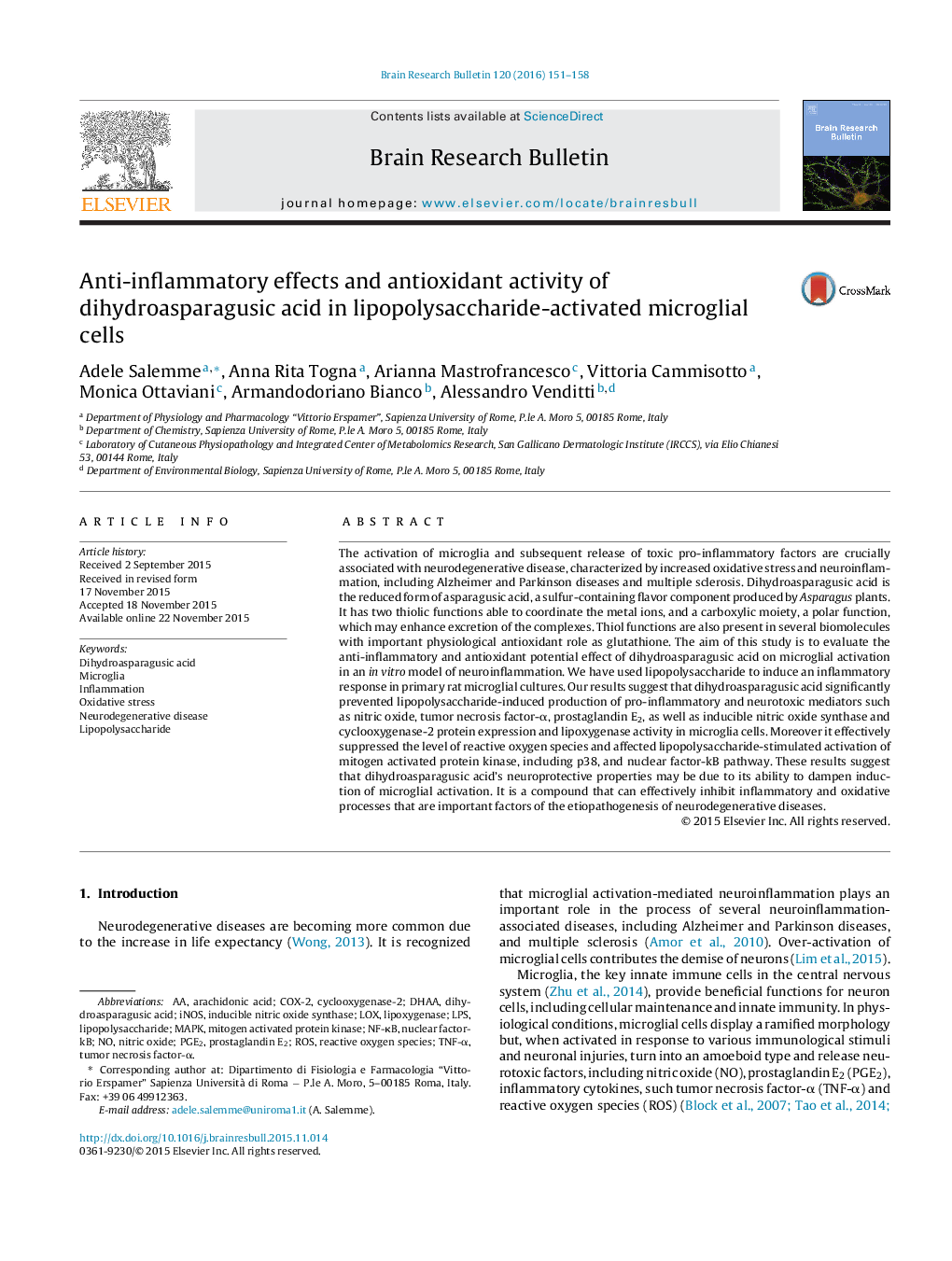| کد مقاله | کد نشریه | سال انتشار | مقاله انگلیسی | نسخه تمام متن |
|---|---|---|---|---|
| 6261656 | 1613236 | 2016 | 8 صفحه PDF | دانلود رایگان |
- Dihydroasparagusic acid reduces inflammatory and oxidative processes.
- DHAA prevents rat microglial activation.
- Dihydroasparagusic acid prevents lipopolysaccharide-induced production of pro-inflammatory mediators.
The activation of microglia and subsequent release of toxic pro-inflammatory factors are crucially associated with neurodegenerative disease, characterized by increased oxidative stress and neuroinflammation, including Alzheimer and Parkinson diseases and multiple sclerosis. Dihydroasparagusic acid is the reduced form of asparagusic acid, a sulfur-containing flavor component produced by Asparagus plants. It has two thiolic functions able to coordinate the metal ions, and a carboxylic moiety, a polar function, which may enhance excretion of the complexes. Thiol functions are also present in several biomolecules with important physiological antioxidant role as glutathione. The aim of this study is to evaluate the anti-inflammatory and antioxidant potential effect of dihydroasparagusic acid on microglial activation in an in vitro model of neuroinflammation. We have used lipopolysaccharide to induce an inflammatory response in primary rat microglial cultures. Our results suggest that dihydroasparagusic acid significantly prevented lipopolysaccharide-induced production of pro-inflammatory and neurotoxic mediators such as nitric oxide, tumor necrosis factor-α, prostaglandin E2, as well as inducible nitric oxide synthase and cyclooxygenase-2 protein expression and lipoxygenase activity in microglia cells. Moreover it effectively suppressed the level of reactive oxygen species and affected lipopolysaccharide-stimulated activation of mitogen activated protein kinase, including p38, and nuclear factor-kB pathway. These results suggest that dihydroasparagusic acid's neuroprotective properties may be due to its ability to dampen induction of microglial activation. It is a compound that can effectively inhibit inflammatory and oxidative processes that are important factors of the etiopathogenesis of neurodegenerative diseases.
Journal: Brain Research Bulletin - Volume 120, January 2016, Pages 151-158
